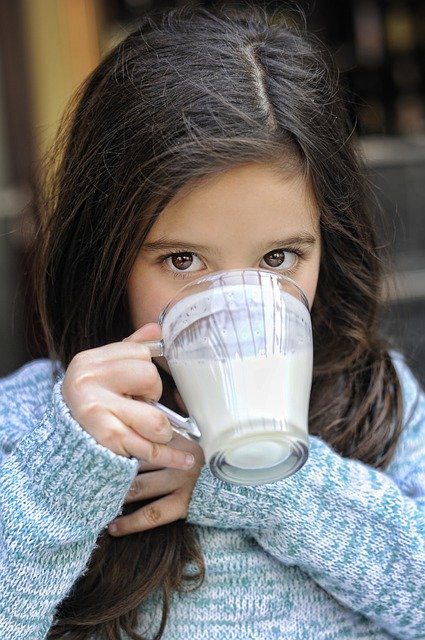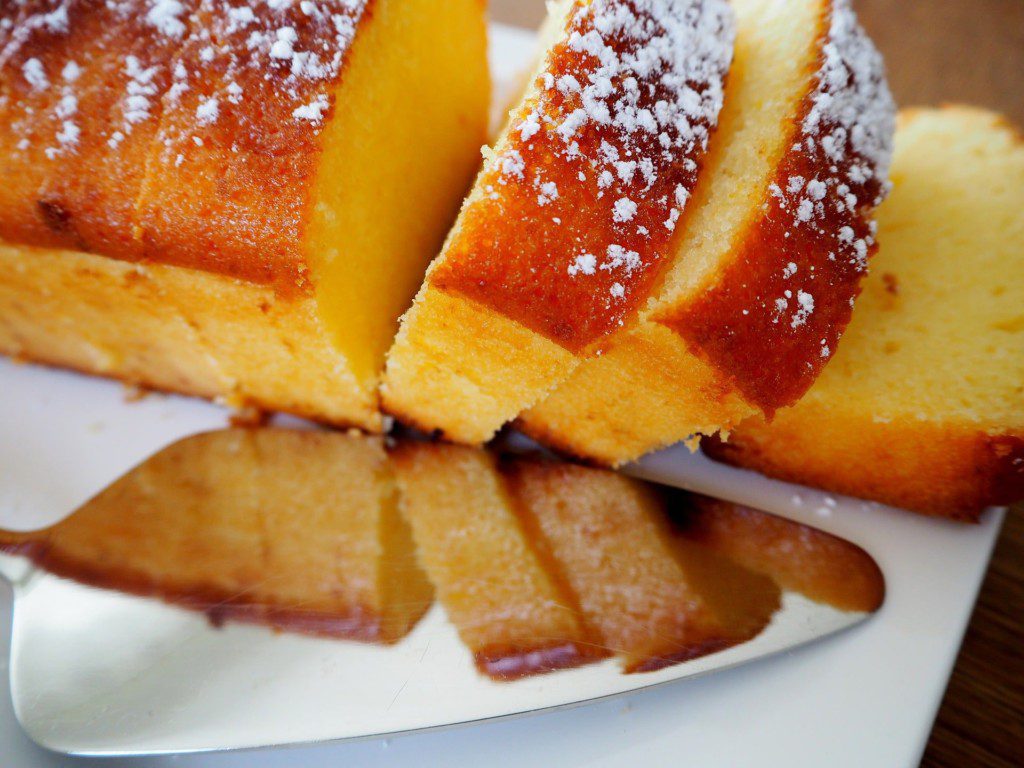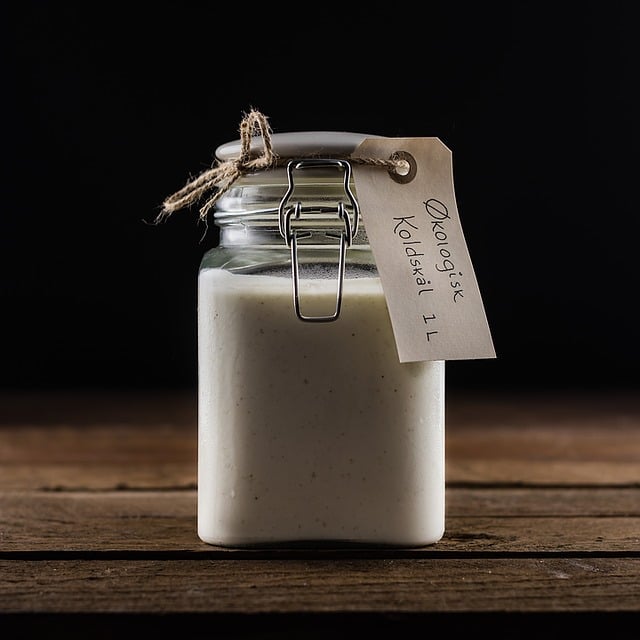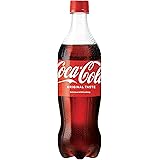Traditional buttermilk is the leftover liquid after churning butter from milk cream. Before homogenization, milk is kept undisturbed for 7-8 hours to allow the cream and milk to separate. It’s low in fat and contains most of the protein present in milk. Traditional buttermilk ferments naturally into a tangy and thick cream. The acidic environment helps prevents microorganisms and increases the shelf life of buttermilk.
2. Cultured Buttermilk
Cultured buttermilk is prepared with helpful bacteria. This kind of buttermilk is made of low fat or no-fat milk by adding lactic acid bacteria just like yogurt. The pH level is reduced and it becomes thick due to the increased acidity which keeps casein from being soluble and results in curdling. Generally, it’s sold in supermarkets with a long shelf life.
3. Acidified Buttermilk
Acidified buttermilk is the substitute of buttermilk. As the name suggests, acidified buttermilk is prepared by adding food-grade acid to milk. 1 tsp of acidic content can be mixed with 1 cup of milk and let it sit for almost ten minutes to curdle it. Generally, paneer is made with the same method but the only difference is we put acid (lemon or vinegar) while heating the milk for getting paneer. We can also use lemon juice for making buttermilk. Soy, almond, or cashew milk can be used for making acidified buttermilk also.
Mishry Reviews: What Kind Of Lemon Squeezer Should You Buy?
Nutritional Information Of Buttermilk

| Nutrients | Amount (For 100 Grams Of Cultured Buttermilk) |
| Calories | 40 Kcal |
| Fat | 4.0 grams |
| Cholesterol | 4 mg |
| Sodium | 105 mg |
| Potassium | 151 mg |
| Sugar | 4.8 grams |
| Calcium | 11% of the daily value |
| Vitamin C | 1% of the daily value |
| Magnesium | 2% of the daily value |
| Cobalamin | 3% of the daily value |
What Does Buttermilk Taste Like?
Traditional buttermilk has a tangy, sour, and a little bit bitter aftertaste that becomes sour with time. On the other hand, cultured buttermilk is thicker than regular milk with a distinctive taste. It’s sweeter with a subtle flavor and the rest depends on the manufacturing process of buttermilk the particular brand.

What Is Buttermilk Used For?
1. As a Beverage | Summer Cooler
Buttermilk is an all-natural, delicious, and healthy beverage that contains calcium, protein, and riboflavin. It can be served chilled with spices and herbs like salt, cumin, and chopped coriander. Some even add chopped ginger, green chilies, and basil seeds (sabja). Buttermilk can also be enjoyed as a sweet drink by adding some sugar in it. It’s easy to digest than any other dairy product.
Buttermilk hydrates the body as it contains plenty of water. It’s a low fat and light drink as compared to milk. Furthermore, Buttermilk is helpful in digestive disorders, lack of appetite and gastrointestinal ailments thus, if your milk intake is less, try consuming buttermilk for absorbing the several health benefits.
Also Read: Mishry Reviews: Best Chaas/ Buttermilk To Buy
2. Culinary Purposes
Apart from being consumed straight, buttermilk has many culinary uses like baking for improving the texture and taste. Buttermilk helps tenderize gluten, gives a softer texture, and more volume to quick bread with a tangy flavor. It’s used in fermentation to enhance the flavor of poultry and seafood also.
Being slightly acidic, buttermilk tenderizes chicken without toughening up the meat, unlike stronger marinating acids including lemon and vinegar. The enzymes present in it are helpful in breaking down the protein of the chicken which results in flavorful, tender chicken! Buttermilk is commonly used to make delicious biscuits, muffins, pancakes, quick bread, batter for fried foods, potato salad, salad dressings, and even as a creamy base in soups.

3. Skin Wellness
Time to rejuvenate your skin with buttermilk!
Buttermilk has been widely used for maintaining the wellness of skin since ancient times. Milk protein and lactic acids are helpful in tackling several skin problems like uneven skin tone, dry skin, blemishes, and discoloration. Alpha Hydroxy Acid along with lactic acid works as an exfoliator and lightens the skin color.
Furthermore, buttermilk has astringent properties and it’s effective in removing suntan. You can apply buttermilk after mixing it with tomatoes for better results.
4. Hair Health
You must have heard that our grandmothers used to wash their hair with leftover buttermilk before shampoos existed. Buttermilk contains essential nutrients that are required for improving hair growth, reducing dandruff and dryness. The regular application of buttermilk stimulates the hair follicles and provides nourishment to hair. The leftover and sour buttermilk can be used for cleaning hair.

What To Make With Buttermilk?
You have lots of leftover buttermilk at home and you want to utilize it. Here are a few mouth-watering recipes you can try with buttermilk.
1. Majjige Saru | Buttermilk Sambhar
Ingredients Required
| Ingredients | Quantity |
| Buttermilk | 1-2 Cups |
| Onion | 1 (Small) |
| Green chilies | 2-3 |
| Curry leaves | 10 |
| Cumin & Mustard seeds | 1 tsp each |
| Tomato | 1 (Small) |
| Oil | 2 Tbsp |
| Coriander leaves | A handful (Chopped) |
| Salt | To taste |
Preparation Method
- Churn the curd into buttermilk. Add water according to your preference.
- Heat oil in a wok, add cumin, mustard, and green chilies.
- Add curry leaves and onions.
- After onions are done add chopped tomatoes and salt. Cook till mushy and take it off from the flame. Now add coriander leaves.
- After it cools down, add buttermilk and mix well.
- Serve with steamed rice.
Also Read : We Reviewed Tops Sambhar Instant Mix. Check It Out.
2. Lemon Buttermilk Cake

Ingredients Required
| Ingredients | Quantity |
| Unsalted butter (room temperature) + For greasing the pan | 1 cup |
| All-purpose flour + For dusting the pan | 3 cups |
| Baking powder | 1 Tbsp |
| Kosher salt | 2 tsp |
| Sugar | 2.5 cups |
| Zest of 8 lemons | About ½ cup (finely grated) |
| Eggs | 4 (Large) |
| Buttermilk | 1 Cup |
| Apricot or peach preserves | ¾ cup |
| Fresh lemon juice | ¼ cup |
| Special Equipment Needed | A 12-cup Bundt pan |
Preparation Method
- Preheat the oven to 350°F. Grease the bundt pan with butter and flour. Set aside.
- Sieve baking powder, salt, and 3 cups flour in a medium bowl.
- Combine sugar and lemon zest in a large bowl; using your fingertips, rub together until lemon sugar is well blended.
- Add 1 cup butter to lemon sugar. Using an electric mixer at high speed, beat until mixture is light and fluffy for few minutes.
- Add eggs one at a time, beating to blend between additions and occasionally scraping down sides and bottom of the bowl with a rubber spatula, until mixture is light and very fluffy.
- Reduce speed to low. Add dry ingredients in 3 additions, alternating with buttermilk in 2 additions, beginning and ending with dry ingredients. Scrape batter into prepared pan and smoothen the top.
- Bake cake until golden brown and beginning to pull away from sides of the pan, 60-70 minutes.
- Transfer to a wire rack and let the cake cool in the pan for 10 minutes. Invert cake onto rack, remove pan and let cool completely.
- Combine preserves and lemon juice in a small saucepan. Bring to a boil, reduce heat and simmer, stirring occasionally, until glaze is reduced to ½ cup. This will take about 6-8 minutes.
- Strain glaze into a small pitcher or bowl, discard solids in strainer. Pour glaze over cooled cake and let sit for at least 10 minutes.
- Serve.
Also Read: We Reviewed Weikfield’s Cooker Cake Mix. Check It Out
3. Buttermilk Biscuits

Ingredients Required
| Ingredients | Quantity |
| Self-rising flour | 2 Cups |
| Chilled vegetable shortening | ¼ cup |
| Buttermilk | 2/3 cup |
Preparation Method
- Position rack in middle of oven and preheat to 500°F. Grease a rimmed baking sheet with non-stick vegetable oil spray or butter.
- Place 2 cups flour in a large bowl. Cut in shortening with a pastry cutter or 2 butter knives until pea-sized lumps form. Stir in buttermilk until a shaggy dough forms.
- On a lightly floured work surface, turn out the dough and gently knead 2–3 times until the dough just comes together. Be careful and do not overwork the dough.
- Roll out the dough to a ½” thickness; cut with a 2” biscuit cutter or small glass that has been dipped in flour.
- Transfer biscuits to prepared baking sheet and bake until golden brown. Transfer to a wire rack and let it cool.
Also Read: The Best Digestive Biscuit By Mishry Reviews.
How Long Does Buttermilk Last?
Buttermilk can last up to 1-2 weeks beyond the printed date on the carton. Continuous refrigeration after opening the pack can make it usable for 2-3 weeks. You can freeze it for further use in cooking and baking for extending its shelf life.
Conclusion
Buttermilk is a healthy dairy beverage that is exceptionally versatile. It’s a popular summer drink that hydrates and provides many other benefits like smooth digestion. Apart from being a low-fat drink, it has an abundance of vitamins and minerals. There are many types of buttermilk which can be used for several purposes like cooking, skin, and hair health. Cultured buttermilk can be bought in case you don’t have traditional buttermilk and it can be replaced as acidified buttermilk for culinary uses so if someone asks what is buttermilk used for and what is the substitute then you know the answer!





